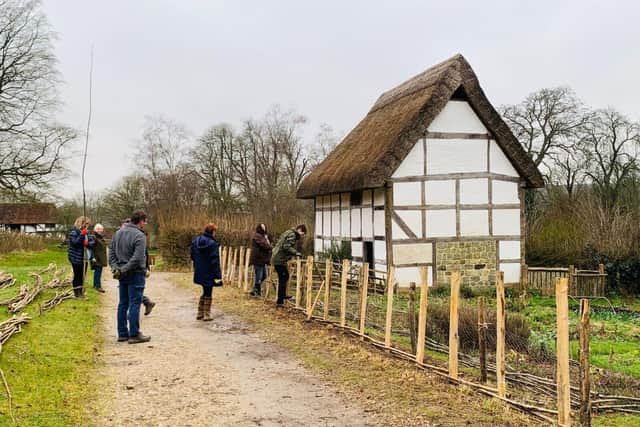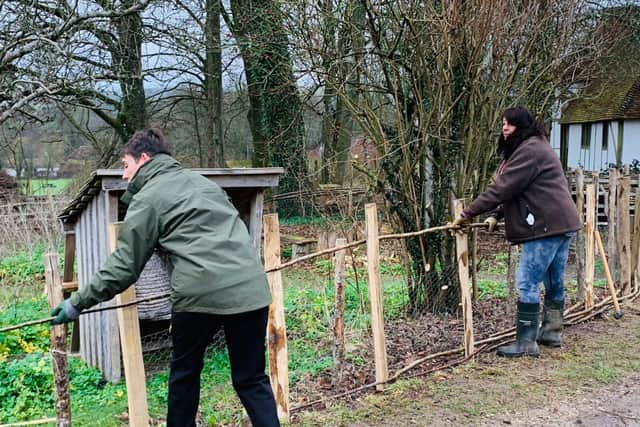Museum gets ready for spring in historic gardens
and live on Freeview channel 276
It is rare to find such a variety of historic gardens from different periods together in one place. This is one of the many things that makes the Museum so special.
“You might be forgiven for thinking that the Museum’s Garden Team have been putting their feet up during the winter, but far from it!” says Carlotta Holt, Head Gardener at Weald & Downland Living Museum. “Throughout the dormant season we’ve been busy carrying out a number of essential winter tasks. This included pruning the heritage fruit trees in all the gardens, as well as in the Bayleaf Orchard – which we recently blessed as part of the annual January Wassail celebrations.”
Advertisement
Hide AdAdvertisement
Hide AdOn Saturday 3 February, Carlotta and her team were joined by members of the public who had signed up to one of the Museum’s popular heritage courses. Taking part in the Continuous Hurdle Fencing Course, the participants helped to replace the fence around the historic garden at Poplar Cottage. Poplar Cottage is a mid-17th century building which was re-erected at the Museum in 1999, having been dismantled in 1982 from Washington, near Steyning in West Sussex. The garden showcases the food and herbs that would have been grown to support those who lived there at that time.


Continuous hurdle fences were built to keep animals in, or out, of a space. In this case, the fence around the cottage was built to keep animals out and away from the produce that was being grown in the garden. The team used chestnut stakes to form the posts, with hazel hetherings woven between to create the continuous fence.
All materials for the fence were locally sourced with the chestnut stakes coming from Haslemere and the hazel from West Dean woods. Typically, the chestnut stakes last around 12 years, and the hazel around 6 years. All the old fencing, which was taken down to be replaced was broken up, and will be used onsite as firewood for the Newdigate Bakehouse.
The wonderful thing about this particular heritage course, is not only do participants learn a traditional skill to take away with them and help keep alive. But they also have the opportunity to support the interpretation and conservation aims of the Museum by helping to rebuild the fence around a historic house and garden.
Advertisement
Hide AdAdvertisement
Hide AdThe Museum offers a range of heritage courses, including Willow Weaving, Making a Traditional Sussex Trug, Timber Framing and many more. Some of the courses are quite unusual and many tend to sell out fast.


If you are interested in finding out more about the historic gardens at Weald & Downland Living Museum, a special exhibition showcasing the history and life of the gardens will be taking place at the Longport Gallery from the end of May.